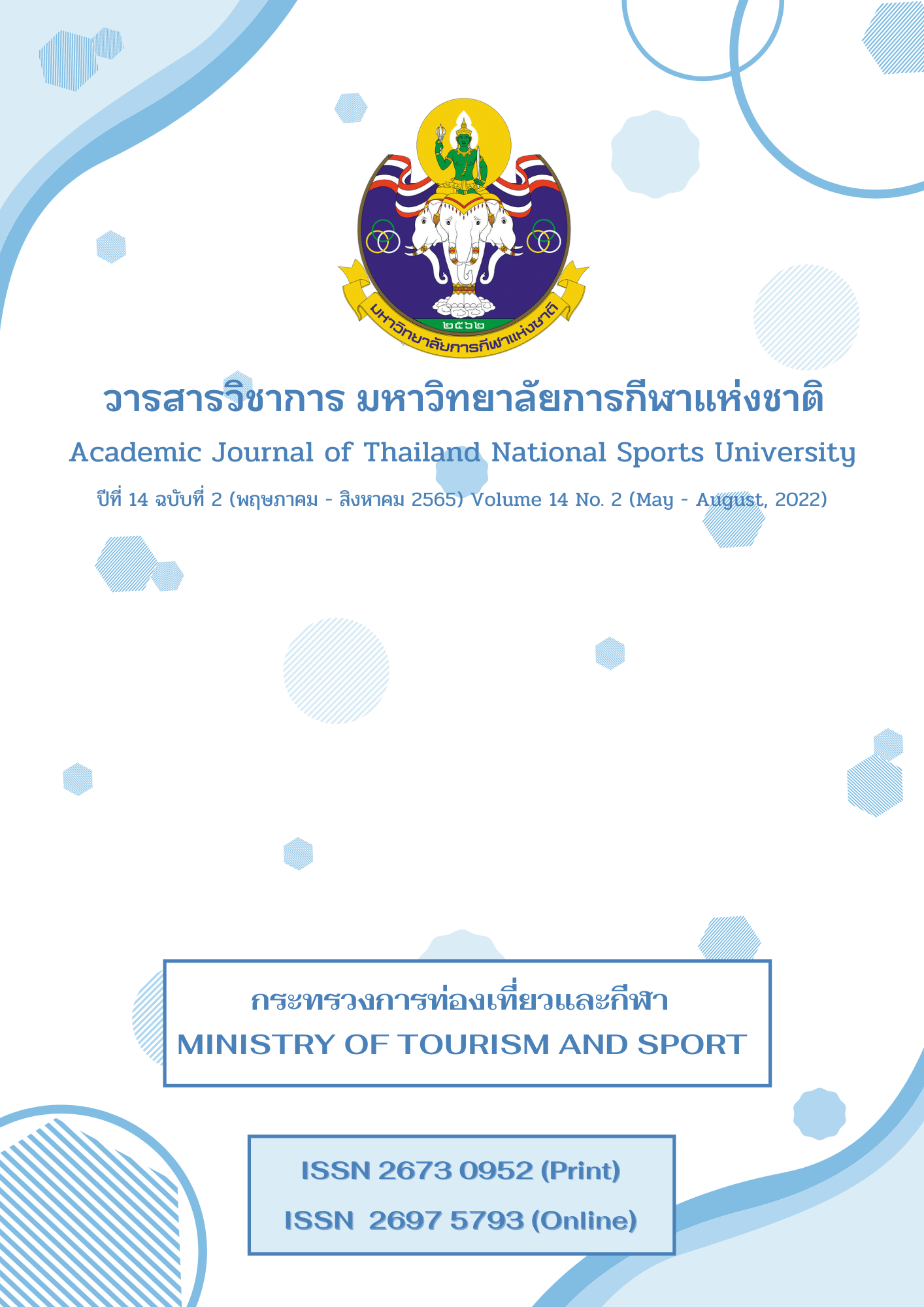THE RELATIONSHIP BETWEEN FACTOR OF MARKETING MIX AND THE DECISION TO USE THE OUTBOUND TRAVEL AGENTS SERVICE AMONG SENIOR TOURISTS
Main Article Content
Abstract
This study aimed (1) to study tourist behavior, (2) marketing mix factors of senior tourists using out - bound travel agents’ services, and (3) the relationship between Marketing Mix and the decision to use the outbound travel agents service among senior tourists. For this quantitative research, the data were gathered by collecting questionnaire among 217 samples of tourists whose age over 50 years old and had used the service of outbound travel agents in 5 companies. The research instruments were questionnaire with content validity (IOC) range from 7.33 - 1.00. The data were collected by purposive sampling. Data were analyzed by frequency, percentage, mean and standard deviation and the Pearson correlation coefficient (r) method was used to determine the degree of correlation. The study was found that most senior tourists earned an average monthly income of more than 35,000 baht. They spend approximately 4 - 7 days traveling, and the average cost of purchasing a tour package is 15,001 - 44,999 Baht. In terms of marketing mix factors, it was found that the senior tourists put the greatest emphasis on meeting the needs of the customers and creating the experiences. And they believe that traveling abroad using an outbound travel agent is much safer than traveling by themselves, which is the factor that influences their decisions the most. The results of the relationship analysis between the factors of marketing mix among the senior tourists and the decision to use the outbound travel agents was found as a positive relationship in every factors. The factors that were found the most positive are customer needs and experience. It was in a moderately positive correlation (r = .514). The second factor that was found positive were convenience and responsiveness. There was a positive relationship at a moderate level (r = .446). The last factors were consumer cost and exchange value were found a low positive correlation (r = .446). Suggestions from the researcher is that tourism operators should choose a tourist attraction or accommodations that have facilities to accommodate groups of elderly tourists, especially for example toilets for the elderly, wheelchair ramp, etc. and accelerate the creation of senior tourist strategies, as they have a high purchasing power and will develop to a higher number in the future.
Article Details

This work is licensed under a Creative Commons Attribution-NonCommercial-NoDerivatives 4.0 International License.
The published article is a copyright of the Academic Journal of Thailand National Sports University. The passage appeared in each article in this academic journal is a perspective of each author which is not related to the journal. Each author is required to be responsible for all components of his/her own article. If there are any mistakes, each author must be responsible for those mistakes on his/her own.
References
Cronbach, L. J. (1970). Essentials of Psychological Test (5th ed.). New York: Harper Collins.
Kiattiphong Udomtanateera. (2019). Marketing Strategy 4Ps+4Cs+4Es. Retrieved from https://www.iok2u.com/index.php/article/11-marketing/327-4ps-4cs-4es-marketing-mix-marketing-mix-4ps-4cs-4es
Ladna Sriampornekkul. (2018). Quality tourism for senior tourists. Journal of Humanities and Social Sciences, Rajapruk University, 4(1), pp. 12 - 28. Retrieved from https://so03.tci-thaijo.org/index.php/rpu/article/view/125751
Ivasciuc, L., Epuran, G., & Micu, A. (2015). From 4P's to 4 E's – How to avoid the risk of unbalancing the marketing mix in today hotel businesses. Annals of “Dunarea de Jos” University of Galati Fascicle I. Economics and Applied Informatics. 21, pp. 77 - 85.
Manager Online. (2017). The Elderly Tourism Market Contributes 200 Billion Baht. Retrieved from https://mgronline.com/business/detail/9600000001108
Maslow, A. H. (1970). Motivation and Personality (2nd ed.). New York: Harper & Row.
Ministry of Tourism and Sports. (2017). Thailand Tourism Statistics. Retrieved from http://www.mots.go.th
Narin Sungrugsa, Supaporn Plomelersee, & Threerangkoon Worabamrungkul. (2016). Styles and behavior in slow tourism of senior tourists in the Western region. University of the Thai Chamber of Commerce Journal Humanities and Social Sciences. 36(2), pp.1 - 19.
Patterson, Ian, & Balderas, Adela. (2018). Continuing and emerging trends of senior tourism: A review of the literature. Journal of Population Ageing, 13(3), 385 - 399. Doi: 10.1007/s12062-018-9228-4.
Prachachat. (2019). TAT points out "The Disabled - elderly Market with Potential and High Spending”. Retrieved from https://www.prachachat.net/tourism/news-397069
Ranee Esichaikul. (2012). Travel motivations, behavior and requirements of European Senior Tourists to Thailand. PASOS: Revista de Turismoy Patrimonio Cultural, 10(2), pp.47 - 58.
Sukothai Thammathirat Open University. (2019). Definition: Elderly society. Retrieved from https://www.stou.ac.th/stouonline/lom/data/sec/Lom12/05-01.html


